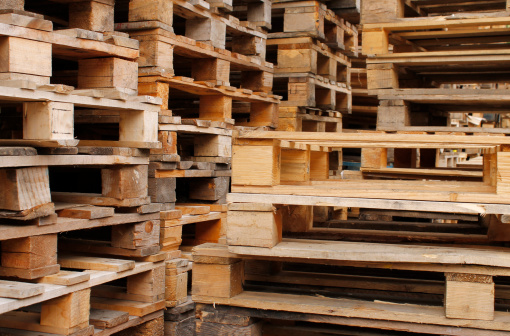The choice of what lumber goes into producing a pallet is usually based on price, and how durable the wood is. Wood is an inexpensive material that is very sturdy, and also recyclable once the pallet wears out. It’s the material of choice for most pallet producers, and widely used throughout the world. Some speciality manufacturers need pallets made of metal or plastic, but these materials are much more expensive. For the most part, wood is the most popular material available. So what kind of wood is typically used, and what goes into ensuring the pallet industry is green or made of new lumber?
Choice of Lumber
The first element to consider is the type of wood used in the pallet’s construction. The lumber used to construct pallets initially was generally a mixed bag, boiling down to whatever the mill had lying around that day, usually of low grade. However, recent pallet studies show that there is a wide range of quality within the pallet market. Reputable manufacturers of pallets are using high quality lumber. Pallets are constructed from the discarded cores of trees. When the premium outer layer of a tree has been harvested for cut lumber, the core is then used for pallets.
More than twice as many pallets are made of hardwood than softwood. Over 60% of hardwood pallets are a combination of various wood types but about 27% are made from oak or from the core of other hardwoods. The variety of core woods will depend on what other markets, for example, the furniture market, have requested. Since hardwood cores such as oak or cherry are more durable, these pallets are ideal for heavy loads of easily damaged goods. Hardwood is classified as high, medium, or low density, and what goes into making your pallet will depend on your needs.
Softwood pallets, on the other hand, are better suited for lighter and less fragile loads, such as cases of paper towels. The softwoods can be made more durable with kiln drying. The kiln drying process makes the yellow pine as sturdy as some hardwoods. Softwoods are lighter than hardwoods, a fact that a company may need to consider depending on how the pallets are to be lifted and moved. Obviously customers who ship heavy loads need sturdier pallets capable of supporting their goods.
Wood is a cost effective solution for most pallet needs in America today. Wooden pallets are still the choice for most businesses that have loose product to ship which means everything from canned goods, to fresh produce to construction materials. Lumber makes pallets and other shipping crates easy to modify to unique design and manufacturing specifications which makes it still the number one building material for pallets.





